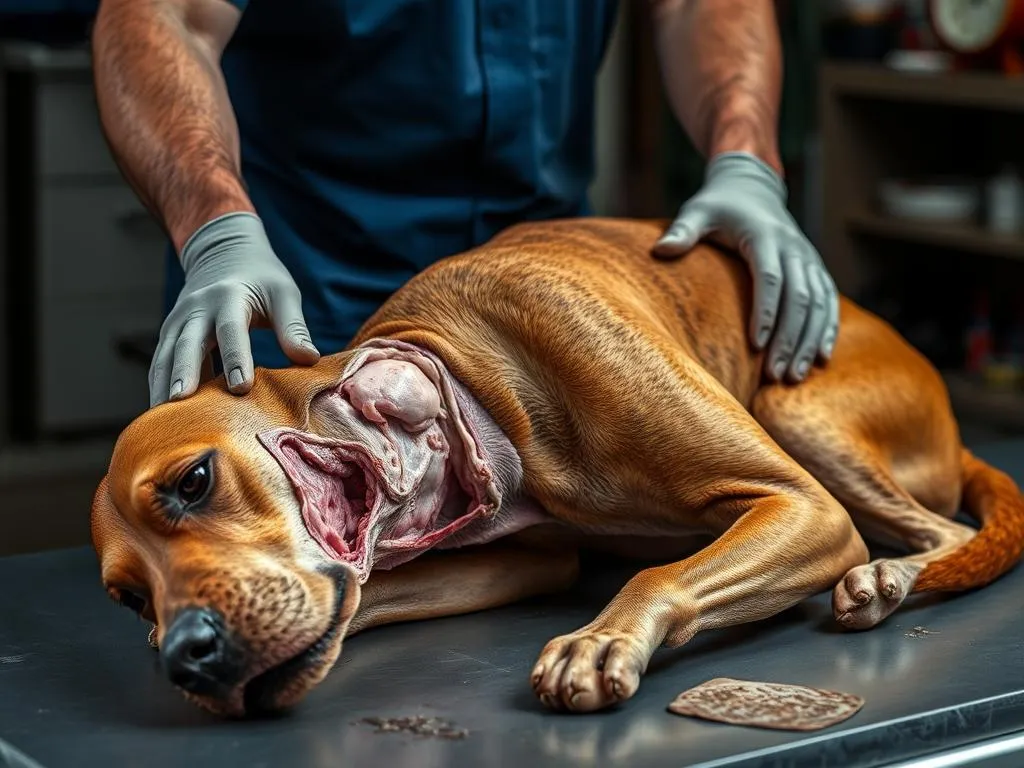
Introduction
Cadaver dogs, also known as human remains detection dogs, are specially trained canines that assist in locating deceased individuals. These remarkable animals play a crucial role in search and rescue operations, particularly in forensic investigations. Their ability to detect even minute traces of decomposing human remains makes them invaluable in various scenarios, from crime scenes to natural disasters.
Effective training is paramount for cadaver dogs, as it ensures that they can perform their duties accurately and reliably. This article will explore the intricacies of cadaver dog training, from understanding the foundational concepts of dog training to the specific techniques required for cadaver detection. Additionally, we will discuss the challenges faced during training, certification processes, real-life applications, and resources for further learning.
Understanding Cadaver Dog Training
What is a Cadaver Dog?
A cadaver dog is a canine trained to detect the scent of human remains. Unlike general search and rescue dogs, cadaver dogs specialize in locating deceased individuals, whether victims of crimes, accidents, or natural disasters. There are two primary types of cadaver dogs: those trained for human remains detection, which focus on locating bodies or body parts, and disaster recovery dogs, which specialize in finding remains in large-scale disasters, such as earthquakes or landslides.
Importance of Cadaver Dogs in Forensics
The historical context of cadaver dogs dates back several decades, with their use evolving significantly over the years. Initially, their roles were limited to specific contexts, but advancements in training techniques and understanding of canine behavior have expanded their applications. Today, cadaver dogs are instrumental in various scenarios, including:
- Crime Scenes: Assisting law enforcement in locating bodies or evidence in homicide investigations.
- Natural Disasters: Aiding recovery efforts in the aftermath of events like earthquakes, floods, and landslides.
- Cold Cases: Helping to reopen investigations by locating remains that may have been overlooked.
The impact of these dogs in forensics cannot be overstated, as they often lead to breakthroughs in cases that might otherwise remain unsolved.
Basic Concepts in Dog Training
Canine Behavior and Learning
Understanding canine behavior is fundamental to successful cadaver dog training. Every dog has its unique personality and learning style, which can affect how they respond to training. Some dogs are more motivated by food, while others may respond better to praise or toys. Recognizing these differences allows handlers to tailor their training methods effectively.
Fundamental Training Techniques
The cornerstone of effective dog training lies in the use of positive reinforcement methods. These techniques encourage desirable behaviors by rewarding the dog, creating a positive association that fosters learning. One popular method is clicker training, where a click sound marks a desired behavior followed by a reward. This method is particularly effective for reinforcing specific actions and commands.
Consistency and patience are critical when training dogs. Establishing a routine helps dogs understand expectations, while patience allows them to learn at their own pace.
Specific Training Techniques for Cadaver Dogs
Scent Discrimination
Scent discrimination is the ability of dogs to identify and differentiate between various scents. This skill is crucial in cadaver dog training, as dogs must be able to distinguish cadaver scent from other odors in the environment. Training often begins with the dog learning to recognize specific scents associated with human remains.
Preparation for Training
Selecting the right dog for cadaver training is essential. Certain breeds, such as Bloodhounds, German Shepherds, and Labrador Retrievers, are often favored for their keen sense of smell and trainability. Additionally, health considerations are paramount; dogs must be physically fit and free of any medical issues that could hinder their performance during training and operational tasks.
Basic Obedience Training
Before delving into cadaver-specific training, handlers must ensure that their dogs have mastered basic obedience commands, such as sit, stay, and come. These foundational commands establish a strong handler-dog bond and create a framework for more advanced training. A well-trained dog is more likely to remain focused during searches and respond promptly to commands.
Introduction to Cadaver Scent
Introducing dogs to cadaver scent is a critical step in their training. Handlers often use scent samples obtained from deceased individuals, which may include soil samples or items that have been in contact with human remains. Techniques for introducing cadaver scent include:
- Scent Association: Pairing the scent with rewards to create a positive association.
- Hide-and-Seek: Hiding the scent in various locations and encouraging the dog to find it.
Advanced Training Scenarios
Once dogs are comfortable with cadaver scent, advanced training scenarios can be introduced. Simulated search situations, such as locating buried remains or finding bodies in water, help dogs adapt to diverse environments. Training in various settings, including urban, rural, and disaster sites, prepares them for real-life operations.
Challenges in Cadaver Dog Training
Common Issues and Behavioral Problems
Despite rigorous training, challenges may arise during cadaver dog training. Common issues include fear, anxiety, and distractions. Dogs may become overwhelmed in busy environments or react to unfamiliar stimuli. Handlers must employ strategies to mitigate these problems, such as gradual exposure to new environments and desensitization techniques.
Maintaining Motivation and Focus
Keeping dogs motivated and focused during training is essential for success. Incorporating regular exercise and mental stimulation into their routines can help maintain their engagement. Activities such as agility training, scent games, and interactive toys can enhance a dog’s overall performance and enthusiasm for training.
Certification and Legal Considerations
Certification Process for Cadaver Dogs
Certification is an essential aspect of cadaver dog training. Various organizations, such as the National Association for Search and Rescue (NASAR), provide certification requirements that ensure dogs meet specific standards. Typically, the certification process involves:
- Written Examination: Assessing the handler’s knowledge of dog training and scent detection.
- Practical Evaluation: Testing the dog’s ability to locate cadaver scent in controlled scenarios.
Successful certification enhances a team’s credibility and ability to assist in official investigations.
Legal Implications of Cadaver Dog Work
Handlers must understand the legal implications of employing cadaver dogs in investigations. These dogs often play a vital role in legal proceedings, and their findings can directly impact investigations and trials. Handlers must maintain ethical standards, ensuring that their training methods are humane and that the dogs are treated with respect.
Case Studies and Real-Life Applications
Successful Cadaver Dog Operations
Numerous cases exemplify the effectiveness of cadaver dogs in real-world scenarios. For instance, during a high-profile homicide investigation, a cadaver dog was instrumental in locating a buried body, providing crucial evidence that led to a conviction. Testimonials from handlers and law enforcement highlight the reliability and accuracy of these dogs, showcasing their indispensable role in solving cases.
Lessons Learned from Field Experience
Field experience offers valuable lessons for trainers and handlers. One key takeaway is the importance of ongoing training and education. Cadaver dog teams must regularly engage in practice scenarios to maintain their skills and adapt to new challenges. Continuous learning ensures that both handlers and dogs remain effective in their roles.
Resources for Further Learning
Recommended Books and Articles
For those interested in delving deeper into cadaver dog training, numerous books and articles are available that cover various aspects of canine training and scent detection. These resources provide insights into techniques, case studies, and the science behind canine behavior.
Professional Organizations and Training Workshops
Several organizations specialize in cadaver dog training, offering workshops and seminars for handlers. These events provide opportunities for networking, skill development, and learning from experienced trainers in the field. Participating in such workshops can enhance a handler’s effectiveness and deepen their understanding of cadaver detection.
Conclusion
The significance of cadaver dog training cannot be overstated. These skilled canines play a vital role in forensics, aiding in the resolution of criminal investigations and disaster recovery. For aspiring handlers and trainers, pursuing a career in this rewarding field offers the opportunity to make a meaningful impact. Engaging with the community and continuing education are essential steps in mastering the complexities of cadaver dog training, ensuring that these remarkable animals can perform at their best.









